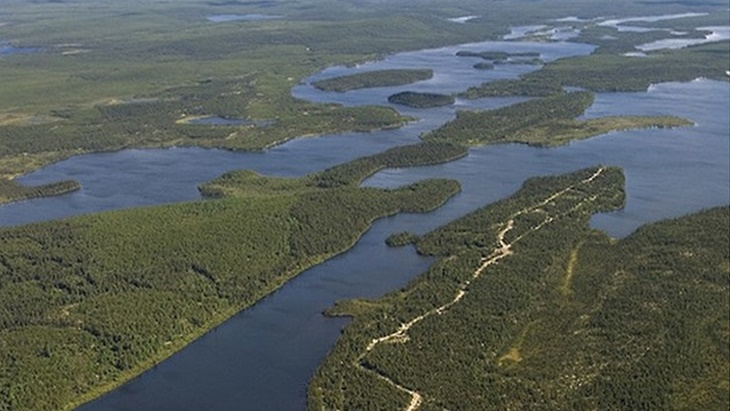ISL mooted for second Canadian uranium project
Denison Mines Corp plans to carry out additional evaluation work following the completion of a conceptual study of the potential application of in-situ leach (ISL) mining methods at the Midwest project in Saskatchewan.

Midwest (Image: Denison)
"We are encouraged by the results of the Midwest Concept Study, and we are pleased to continue the further evaluation of the potential application of the ISR mining method to Midwest, with the support of our partner Orano," Denison President and CEO David Cates said.
Denison has been investigating the use of ISL (also referred to as in-situ recovery, or ISR) methods at the Phoenix deposit at its flagship Wheeler River project, also in Saskatchewan, for which a pre-feasibility study was completed in 2018. The company has since then developed a "highly skilled and motivated" technical team to evaluate the application of ISL methods to high-grade uranium deposits in the Athabasca Basin, he said.
The concept study was prepared during 2022 and was formally issued to the Midwest Joint Venture early this year. The joint venture partners have now given Denison the go-ahead to carry out evaluation activities to support further assessment of the potential application of ISL methods at the project, although the company noted that the studies so far are preliminary in nature. "Further technical evaluations may not be advisable or completed if the preliminary results of internal studies are not maintained after further testing and/or analysis," it said.
Midwest is a joint venture owned by Denison (25.17%) and Orano Canada Inc. (74.83%), located about 25 kilometres from the existing McClean Lake mill, which is 22.5% owned by Denison. The project is host to two high-grade unconformity-hosted uranium deposits: Midwest Main, with estimated indicated mineral resources of 39.9 million pounds U3O8 (15,347 tU) at an average grade of 4.00% U3O8 and inferred resources of 11.5 million pounds at an average grade of 0.66% U3O8; and Midwest A, with estimated indicated resources of 10.8 million pounds U3O8 at an average grade of 0.87% U3O8 and inferred resources of 6.7 million pounds at an average 5.8% U3O8.
A 2007 decision to proceed with the development of an open pit operation at Midwest - with ore processing at the McClean Lake mill - was put on hold the following year when economic conditions saw the estimated capital costs of the project increase by 50%, although the joint venture partners continued with the environmental assessment process for the project as an open pit mine. The final version of the Midwest Project Environmental Impact Statement was approved in September 2012.
ISL recovers minerals from ore in the ground by dissolving them in situ, using a mining solution - the lixiviant - which is injected into the ore zone through drill holes called injection wells. The solution is then pumped to the surface, where the minerals are recovered from the uranium-bearing solution, and the reconditioned lixiviant re-used for further production. This causes little surface disturbance and generates no tailings or waste rock, and without the expenses associated with removing ore from the ground or managing tailings, is a lower cost option than underground or open-pit mining. But it requires suitable geology: the orebody needs to be permeable to the liquids used, and located so that groundwater away from the orebody cannot become contaminated.
More than half of the world's uranium production is now produced by ISL, but the technique has not so far been used in Canada.
Denison and Orano have also been evaluating mining methods including Surface Access Borehole Resource Extraction - or SABRE - which has been tested at McClean Lake. SABRE is a non-entry, surface-based mining method that uses a high-pressure water jet placed at the bottom of a drill hole to excavate a mining cavity.
Researched and written by World Nuclear News
- China Institute of Atomic Energy
- Nuclear Power Institute of China
- Southwestern Institute of Physics
- China Nuclear Power Operation Technology Corporation, Ltd.
- China Nuclear Power Engineering Co., Ltd.
- China Institute for Radiation Protection
- Beijing Research Institute of Uranium Geology (BRIUG)
- China Institute of Nuclear Industry Strategy (CINIS)
- China Nuclear Mining Science and Technology Corporation


